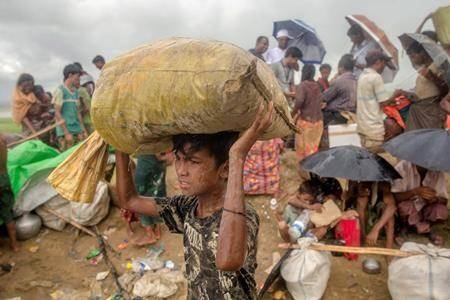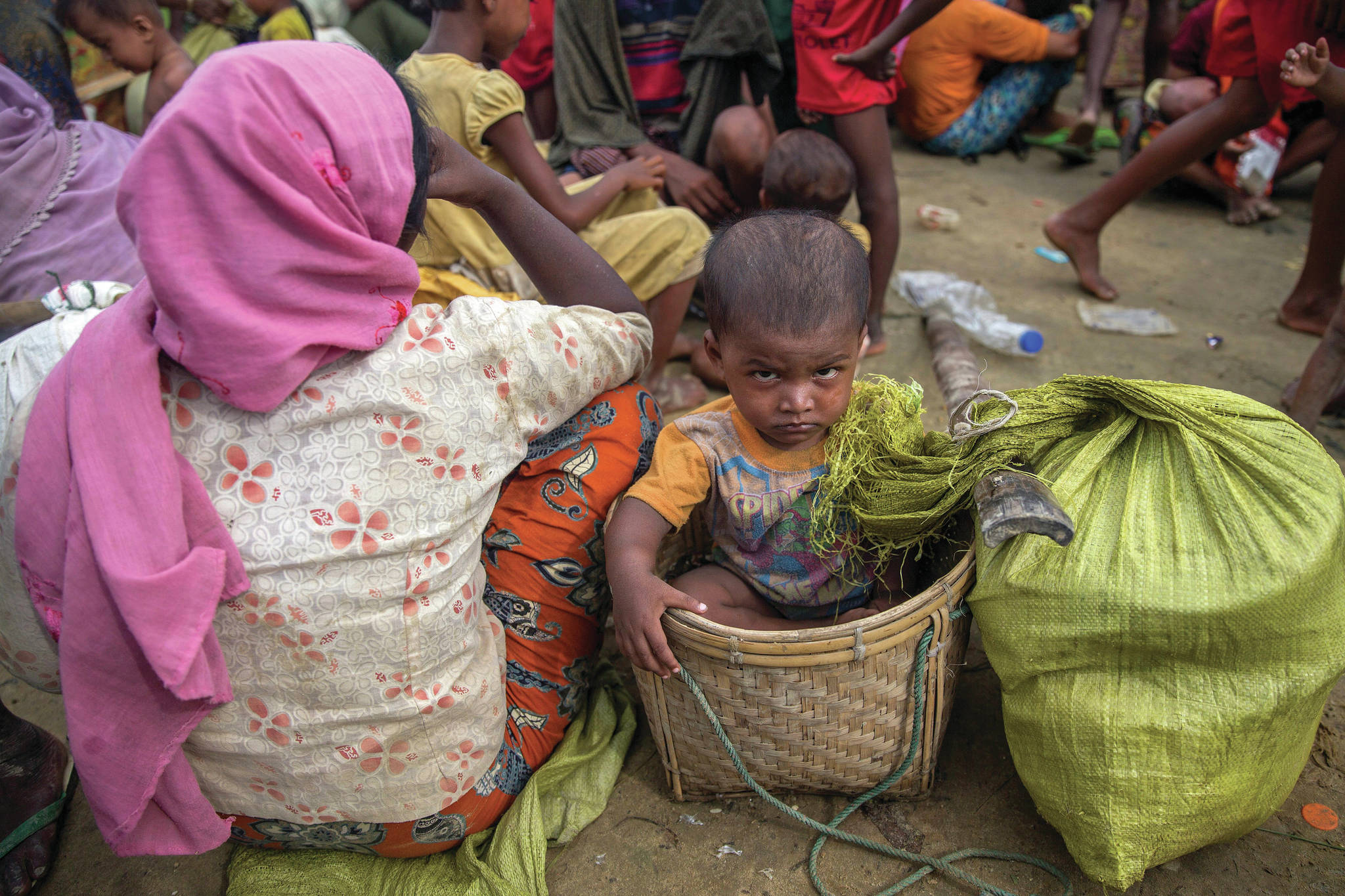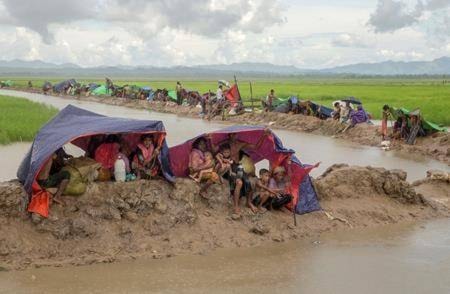COX’S BAZAR, Bangladesh — Thousands more Rohingya Muslims are fleeing large-scale violence and persecution in Myanmar and crossing into Bangladesh, where more than half a million others are already living in squalid and overcrowded camps, according to witnesses and a drone video shot by the UN refugee agency.
The UNHCR video shot Monday shows thousands upon thousands of Rohingya Muslims trudging along a narrow strip of land alongside what appears to a rain-swollen creek in the Palong Khali area in southern Bangladesh. The line of refugees stretches for a few kilometres.
Witnesses say a new wave of refugees started crossing the border over the weekend. An Associated Press photographer saw thousands of newcomers near one border crossing Tuesday. Several said that they were stopped by Bangladeshi border guards and spent the night in muddy rice fields.
In Geneva on Tuesday, UNHCR spokesman Andrej Mahecic said an estimated 10,000 to 15,000 Rohingya had fled since Sunday night — raising the overall total to 582,000 refugees who have left Myanmar since Aug. 25.
Nearly 60 per cent of the refugees are children. The UN children’s agency, UNICEF, warned Tuesday that without immediate additional funding, it will not be able to continue providing life-saving aid and protection to Rohingya children. UNICEF said it has received just 7 per cent of the $76 million it needs.
Mahecic said the latest influx came through the Anjuman Para border crossing point, and many of the new refugees explained they had fled when their villages were set on fire. Anjuman Para is in the Palong Khali area where the drone video was shot.
“As of this morning, they are still squatting in the paddy fields of Anjuman Para village in Bangladesh,” Mahecic told a news briefing. “They are waiting for permission to move away from the border, where the sound of gunfire continues to be heard every night from the Myanmar side.”
The violence in Buddhist-majority Myanmar’s Rakhine state erupted after a Rohingya insurgent group known as the Arakan Rohingya Salvation Army attacked at least 30 security outposts on Aug. 25 and the military responded with brutal attacks against the Rohingya Muslim population.
The exodus of Rohingya has continued, with a few small breaks, over the last eight weeks.
The new arrivals, almost all terrified and starving, described scenes of incredible violence with army troops and Buddhist mobs attacking Rohingya homes. The UN has described the violence as “textbook ethnic cleansing.”
More recent refugees have also said the Rohingya were being starved in a bid to make them leave.
A woman who spoke to the AP on Tuesday after her arrival said they had had no food to eat.
“We came here two nights ago with lots of difficulties. It took us eight days to reach here,” said Anjuma, who gave just one name.
Several refugees said Bangladesh border guards were not letting them move toward the refugee camps and they were forced to spend the night in the open in pelting rain.
Myanmar officials have denied any systematic violence against the Rohingya Muslims.


